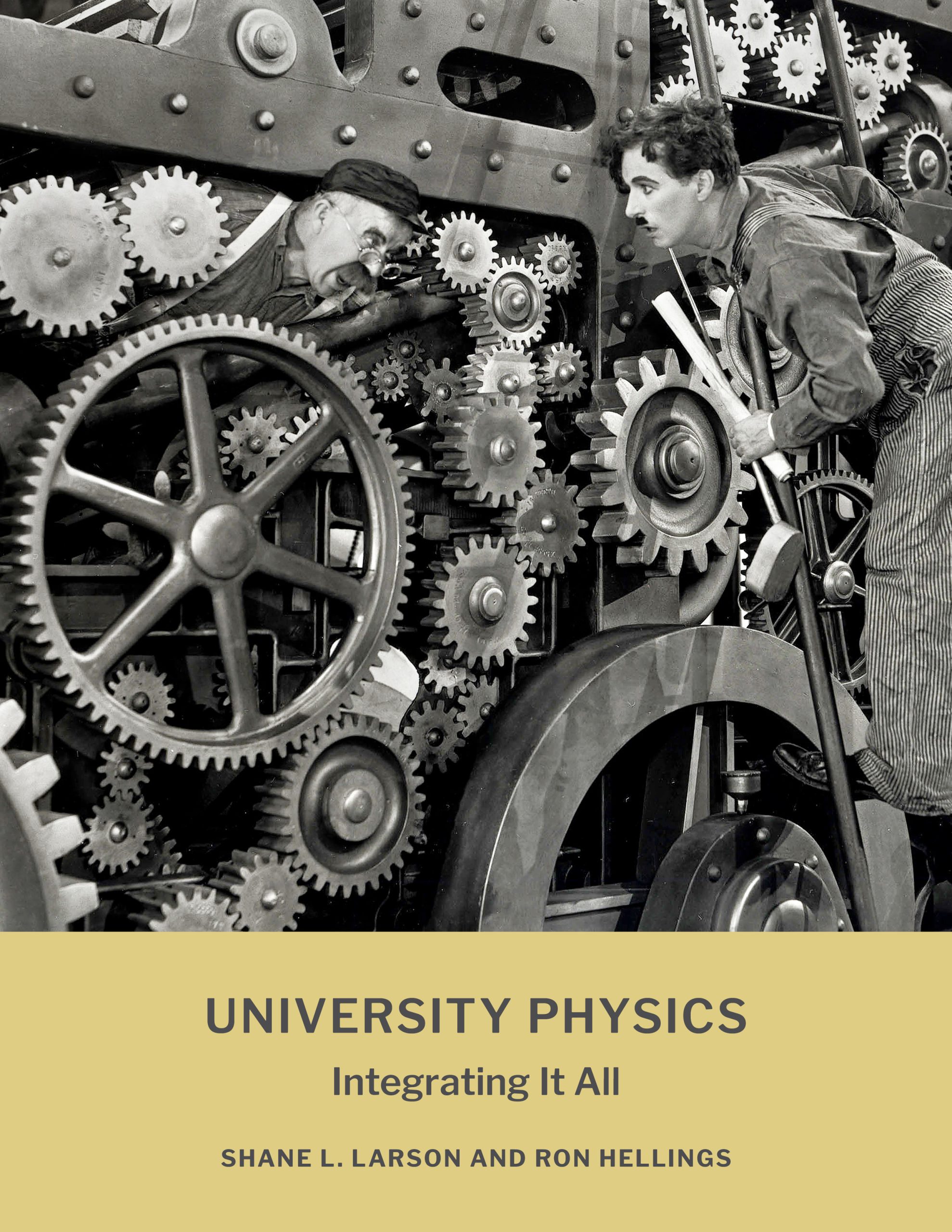
University Physics: Integrating It All
Forthcoming 2024
This introductory physics textbook provides a fundamental framework of core physics topics in a shorter, more engaging, and less expensive text. It includes hundreds of worked examples and problems, and acts as a primer for students eager to know where their physics career is going.
Summary
This refreshing new, calculus-based textbook answers a demand from instructors for comprehensive coverage of introductory physics in a clearer, shorter, more engaging and less expensive text. University Physics provides hundreds of worked examples and chapter-ending problems that cover the fundamentals traditional to this course while developing a clear understanding of how the mathematical frameworks learned in calculus connect to and take on physical meaning in their applications to physics. Optional introductions to topics that students are not often exposed to in introductory courses make this new text a brilliant primer for students who are eager to know where their newly launched physics careers will be going.
Table of Contents
1. Introduction
1.2. Working with Numbers
1.3. Arithmetic
1.4. Working with units
1.5. Math Requirements
1.6. Some Mathematical Jargon and Notation in Physics
1.7. Summary
2. Velocity and Acceleration
2.2. Displacement
2.3. Position and Speed
2.4. Velocity
2.5. Straight-line Acceleration: Speeding Up and Slowing Down
2.6. Graphing the Motion
2.7. Constant-acceleration Motion
2.8. Free Fall
2.9. How to Solve Physics Problems
2.10. Variable Acceleration
2.11. Summary
3. Vectors
3.2. Vector and Scalars
3.3. Vector Addition
3.4. Components and Basis Vectors
3.5. Vector Addition (Revisited)
3.6. Summary
4. Two-Dimensional Kinematics
4.2. Coordinate Systems and Position Vectors
4.3. Acceleration in Two Dimensions
4.4. Projectile Motion
4.5. Circular Motion and Centripetal Acceleration
4.6. Relative Velocity
4.7. Summary
5. Newton’s Laws
5.2. Newton’s Second Law
5.3. Newton’s Third Law
5.4. Forces
5.5. Free-Body Diagrams
5.6. Statics
5.7. Summary
6. Forces
6.2. Normal Force
6.3. Frictional Forces Kinetic and Static
6.4. Problems on an Inclined Plane
6.5. Tension
6.6. Elastic and Spring Forces
6.7. Refrigerator Magnet Force
6.8. Apparent Weight
6.9. Centripetal Force
6.10. Centrifugal and Other Inertial Forces
6.11. Summary
7. Energy
7.2. Work and the Change in Mechanical Energy
7.3. Power
7.4. The Dot Product
7.5. Work By A Non-Uniform Force: The Definite Integral
7.6. Path Integrals
7.7. Summary
8. Conservative Forces
8.2. Finding the Potential Energy
8.3. The Partial Derivative
8.4. Finding the Potential Energy – Revisited
8.5. Graphing the Potential Energy
8.6. Conservation of Energy
8.7. Summary
9. Momentum
9.2. Total Momentum
9.3. Center of Mass
9.4. Collisions
9.5. Collisions in Two Dimensions
9.6. Elastic Collisions
9.7. Summary
10. Rotation About a Fixed Axis
10.2. Torque About an Axis
10.3. Statics of Extended Bodies
10.4. Fixed-Axis Rotational Dynamics
10.5. Rotational Inertia of Continuous Bodies
10.6. Summary
11. Rotation in Three Dimensions
11.2. Angular Momentum
11.3. Principle Axes
11.4. Precession
11.5. Angular Momentum of a Translating and Rotating Body
11.6. Kinetic Energy of a Translating and Rotating Body
11.7. Single-Axis Versus Three Dimensions
11.8. Summary
12. Simple Harmonic Motion
12.2. Differential Equations
12.3. Simple Harmonic Motion
12.4. Energy in Simple Harmonic Motion
12.5. Other Harmonic Oscillators
12.6. Summary
13. Damped Driven Oscillators
13.2. Damped Harmonic Oscillators
13.3. Inhomogeneous Linear Differential Equations
13.4. Driven Damped Harmonic Oscillators
13.5. Resonance
13.6. Summary
14. Pressure and Fluids
14.2. Pressure in a Fluid
14.3. Pascal’s Principle
14.4. Archimedes’ Principle
14.5. The Equation of Continuity
14.6. Bernoulli’s Equation
14.7. Viscosity and Poiseuille’s Law
14.8. Summary
15. Waves
15.2. Reflection From the Ends
15.3. The Wave Equation
15.4. The Boundary-Value Problem
15.5. Continuous Waves
15.6. Reflection and Transmission at an Interface
15.7. Summary
16. Sound Waves and Standing Waves
16.2. The Doppler Effect
16.3. Interference and Beats
16.4. Standing Waves
16.5. Standing Waves On a String
16.6. Reflection of Sound in an Air Column
16.7. Longitudinal Standing Waves
16.8. Summary
17. Thermal Physics
17.2. Thermal Expansion
17.3. Specific Heat
17.4. Latent Heats
17.5. Energy Transfer
17.6. Heat Conduction
17.7. Summary
18. Thermodynamics
18.2. The Ideal Gas Law
18.3. Molecular Speed Distribution in a Gas
18.4. Energy and the First Law
18.5. Specific Heats of a Gas
18.6. Thermodynamic Processes
18.7. Entropy and the Second law
18.8. Summary
19. Electric Forces and Fields
19.2. Coulomb’s Law
19.3. Induction and Polarization
19.4. Electric Fields
19.5. Continuous Distributions of Charge
19.6. Electric Field Lines
19.7. Electric Flux and Gauss’s Law
19.8. Summary
20. Electric Potential
20.2. The Electric Potential
20.3. Fields and Potentials
20.4. Uniformly Charged Parallel Plates
20.5. Equipotential Surfaces
20.6. Capacitance
20.7. Polarization and Dielectrics
20.8. Energy in a Capacitor
20.9. Summary
21. Electric Circuits
21.2. Batteries
21.3. Resistors and Light Bulbs
21.4. Energy and Power in Circuit Elements
21.5. Circuits
21.6. Equivalent Resistance
21.7. Kirchoff’s Laws
21.8. RC Circuits
21.9. Summary
22. Magnetic Forces and Fields
22.2. Magnetic Force on a Charged Particle
22.3. Magnetic Force on a Current-Carrying Wire
22.4. Calculating the Magnetic Field
22.5. Magnetic Field Due to a Wire
22.6. Loops and Solenoids
22.7. Ampère’s Law
22.8. Magnetic Properties of Materials
22.9. Summary
23. Light and Electromagnetic Waves
23.2. Electric and Magnetic Fields in a Wave
23.3. The Electromagnetic Spectrum
23.4. Huygens’ Principle and Reflection
23.5. Refraction
23.6. Energy in Electromagnetic Waves
23.7. Summary
24. Geometrical Optics
24.2. Thin Lenses
24.3. Ray Tracing and Image Size
24.4. Spherical Mirrors
24.5. Combining Optical Elements
24.6. Optical Instruments
24.7. Summary
25. Wave Optics
25.2. Phasors
25.3. Gratings
25.4. Diffraction
25.5. Resolution
25.6. Thin Films
25.7. Polarization
25.8. Circular Polarization
25.9. Summary
Appendices
B. Trig Review for Physics
C. Calculus for Physics
D. Units and Conversions
E. Physical and Fundamental Constants
F. Answers to Odd-Numbered Problems
Index
#book_toc p {
margin-bottom: 0px;
}
Reviews
“Conversational and friendly while still maintaining an appropriate depth of subject matter and rigor.
There are a lot of textbooks for introductory physics; what makes this one stand out is its
presentation of the material. …this textbook flies against the convention and talks to the student,
not at the student.”
–Ethan Deneault, University of Tampa


